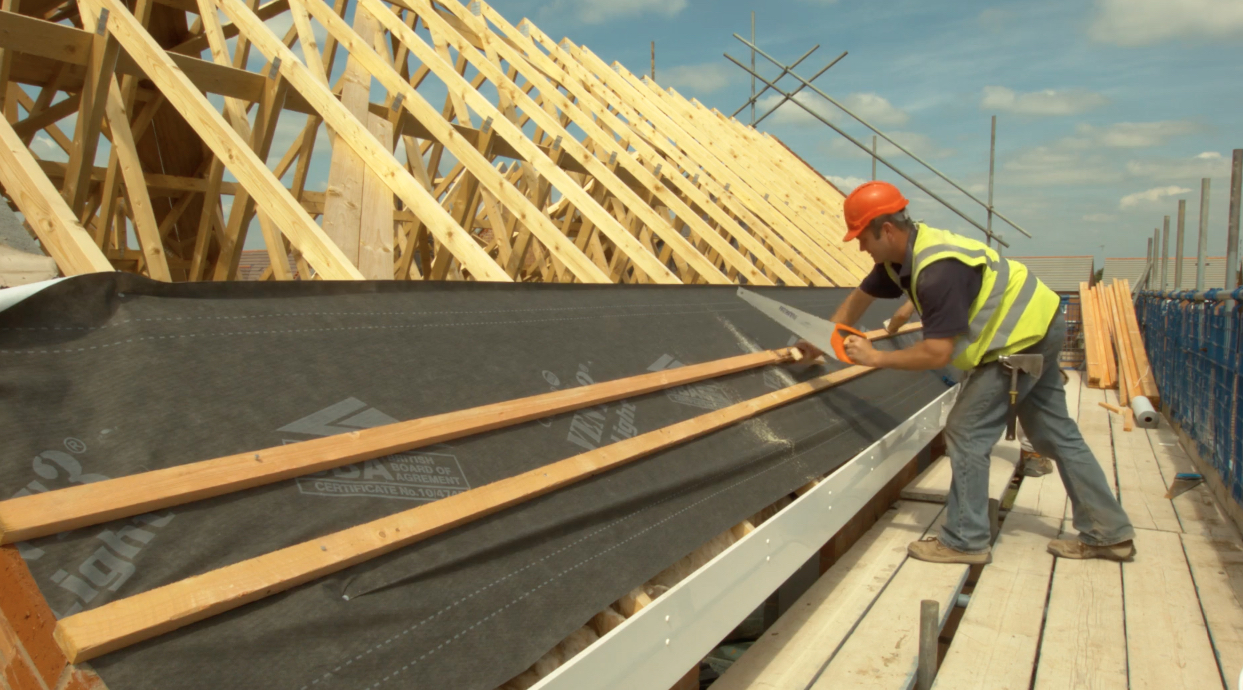
LEADING players in the roofing sector have warned that global timber shortages are putting the UK housebuilding supply chain under ‘enormous pressure’.
‘Faltering’ availability and rising material costs have been described as presenting a ‘serious challenge’, with roofing businesses and organisations highlighting concerns about ‘extremely low’ available stocks of European softwood (the raw material used to produce UK roofing batten) at a time of high levels of demand from the housebuilding industry as it continues to recover from Covid-related disruption.
The National Federation of Roofing Contractors (NFRC), Avonside Group (including Avonside Roofing), Marley and SR Timber are highlighting the impact that shortages are having, revealing it is fuelling ‘steep and rapid’ cost inflation for roofing contractors.
China, the world’s largest importer of softwood and hardwood logs, has been hit by factors such as flooding and increasingly strict forest protection measures, which have impacted on domestic logging activities. China has been looking to Europe and other regions for additional supply, following the announcement that Russia is proposing a ban on exports of softwood logs and valuable hardwood logs.
North America is still experiencing an impact from the first pandemic lockdown, which saw the closure of half of Canadian and a third of US sawmills, which led to a halt in American and Canadian exports to the world market.
Russia is the world’s largest exporter, but its proposed export restrictions are said to be already impacting the global timber market.
Despite sawmill closures during the first Covid lockdown across Europe, major producers maintained production and in some cases increased it. However, in the space of a few weeks, Europe became the world’s leading exporter of sawn softwood. In Scandinavia and Central Europe, sawn log prices, as well as routing and transport costs, are described as ‘rising rapidly’.
In addition to these factors, a growth in DIY and garden projects during Covid lockdowns, ‘robust’ construction recovery, and shipping and freight-related issues, are all cited as ‘conspiring’ against a return to plentiful timber stock.
For roofing contractors, the biggest impacts are on cost and productivity. Delays in supplies of materials such as batten can impact on production schedules, and the knock-on financial implications of that.
Avonside Group’s CEO Eddie Stanton said, “The price of roofing batten is rising on a monthly basis, already in excess of 50% over the past six months, and supply lead times are getting longer. This is putting enormous pressure on the housebuilding supply chain, especially roofing contractors, in terms of what price increases they can absorb and what they have to pass on.”
Reflecting on Marley’s position in respect of its JB Red timber brand, the company’s roof systems director Stuart Nicholson said, “The global/US pressure of increased demand for timber has exacerbated the supply issues caused by the pandemic and Brexit. Therefore, it remains extremely challenging to secure the raw materials needed to produce and supply finished products. Marley has strong relationships and a robust supply chain with more than 60 timber mills. However, even considering this, current demand levels are outstripping supply. This is having a severe knock-on effect on global softwood timber prices, which are constantly increasing.
“Those in the UK supply chain are working hard to secure increased supplies of raw materials and finished products. It is important to work collaboratively, with housebuilders engaging with their suppliers and subcontractors to understand the challenges and to plan ahead.”
SR Timber’s trading director Shaun Revill added, “We’re in the very fortunate position of having our own dedicated sawmill in the Baltics, which means we have our own robust supply chain – but even that has been tested to the limit recently with Brexit and Covid, and we are not insulated from what’s going on globally. We have been very proactive and transparent with our customers and given them lots of information to explain the situation regarding stock availability – which currently has a lead time of around ten days – and price movements. This has been well received when you put it into context that the industry hasn’t seen anything like this since World War II.”
James Talman, chief executive of the NFRC, said the industry is currently seeing ‘unprecedented shortages’ of roofing materials – particularly timber. “This is due to a whole host of different reasons, from Covid-19 restrictions to the impact of low US timber supplies,” he revealed. “Our data shows that two-thirds of roofing contractors saw material availability deteriorate in the first quarter of the year, and 89% reported price rises. Timber battens were the second-highest material shortage after roof tiles with a third of contractors reporting shortages. Unsurprisingly, this is the top concern for roofing contractors – above Covid and Brexit.
“Whilst our supplier members are doing all they can to alleviate shortages, it will still be some time before we are back to steady levels of supply, and homebuilders therefore need to work collaboratively with roofing contractors to plan ahead, build in lead times, factor in price rises and ensure flexibility in contracts.”
The availability of construction products is likely to get worse before it gets better, according to a recent statement by the Construction Leadership Council’s (CLC) product availability group.
SR Timber noted that even if sawn wood production is able to meet European demand thanks to abundant forest availability, it will take longer than usual to meet orders already taken whilst at the same time rebuilding the minimum stock level in sawmills.
Roofing contractors are now having to plan material supply further in advance, in the hope that batten suppliers are able to meet forecast volumes.
The NFRC, Avonside Group, Marley and SR Timber are urging the roofing and housebuilding industries to come together to address rising costs to ensure contractors and batten suppliers can afford to buy the required materials.








